No one knows where information from black holes goes.

Black holes can digest everything that exists in the Universe, but the process of extracting information from them is still unavailable.
If you believe Google, then Stephen Hawking is the most famous of living physicists, and his most famous work is the information paradox of black holes. If you know at least something about physics, here's what you need to know. Before Hawking, black holes were not a paradox. Yes, if you drop the book into the BH, you can no longer read it. As far as it crossed the horizon of BH events, it is already impossible to reach outside. The event horizon is a closed surface within which everything is caught, even the light. Therefore, the information does not break out of the BH, the book is gone. This is unpleasant, but physicists do not care. The information from the book may not be seen, but there is nothing paradoxical about it.
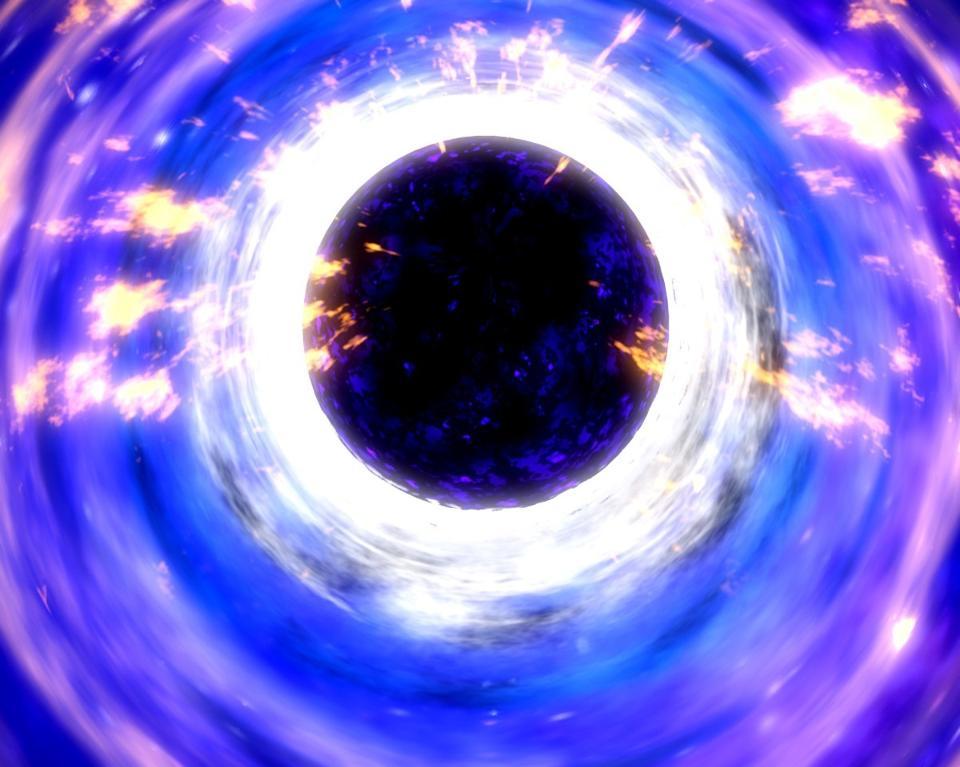
Although Einstein's theory gives accurate predictions for the horizon of BH events and space-time in its immediate vicinity, quantum corrections can change them noticeably.
And then Stephen Hawking appeared. In 1974, he showed that BHs emit radiation, and this radiation does not transfer information. It is completely random, except for the distribution of particles as a function of energy - the Planck spectrum with a temperature inversely proportional to the BH mass. If a BH emits particles, it loses mass, contracts and heats up. After a sufficient amount of time and radiation, the BH will completely disappear, and the information hidden in it will not be returned. BH evaporated; books inside it can not be. So where did the information go?
')
You can shrug and say: “Well, it’s gone, so what? Do we not permanently lose information? ”No, we do not lose. At least in principle. In practice, we, of course, lose information. If you burn a book, you will not be able to read what was in it. But from a fundamental point of view, all the information that made up the book is contained in smoke and ash.

Everything that burns may look destroyed, but everything about the state of this object before it burned down, in principle, can be restored - if you track everything that comes from the fire.
All because, according to all the data we know today, the laws of nature can go forward and backward in time - each unique initial state corresponds to a unique final state. There are no two different initial states that will come to one final state. The story of the burning book in rewind looks unique. If you very, very carefully collect the smoke and ash in the correct sequence, you can restore the burned book. This is a very unlikely process, and in practice you will not see it. But in principle this is possible.
But with black holes it's not like that. When studying finished BH there is no difference what formed it. As a result, you will only have thermal radiation, which, in honor of the discoverer, is now called "Hawking radiation." Here is a paradox: BH evaporation is a process that cannot be reversed. He, as we say, is irreversible. And this worries physicists because it demonstrates their lack of understanding of the laws of nature.

The white line is the horizon border of events around the BH. Information from the inside of the horizon can not get out
The paradox of loss of information in the BH speaks about the internal contradictions of our theories. When we combine - as Hawking did in his calculations - the general theory of relativity with quantum field theories in the Standard Model, the result is incompatible with quantum theory. At the fundamental level, any interaction of particles must be reversible. Hawking demonstrated that, due to the irreversibility of BH evaporation, these two theories are incompatible.
The seemingly obvious source of contradiction is that irreversible evaporation was derived without taking into account the quantum properties of space and time. For this we would need a theory of quantum gravity, but we still do not have it. Most physicists therefore believe that quantum gravity will eliminate this paradox — they simply do not yet know exactly how.
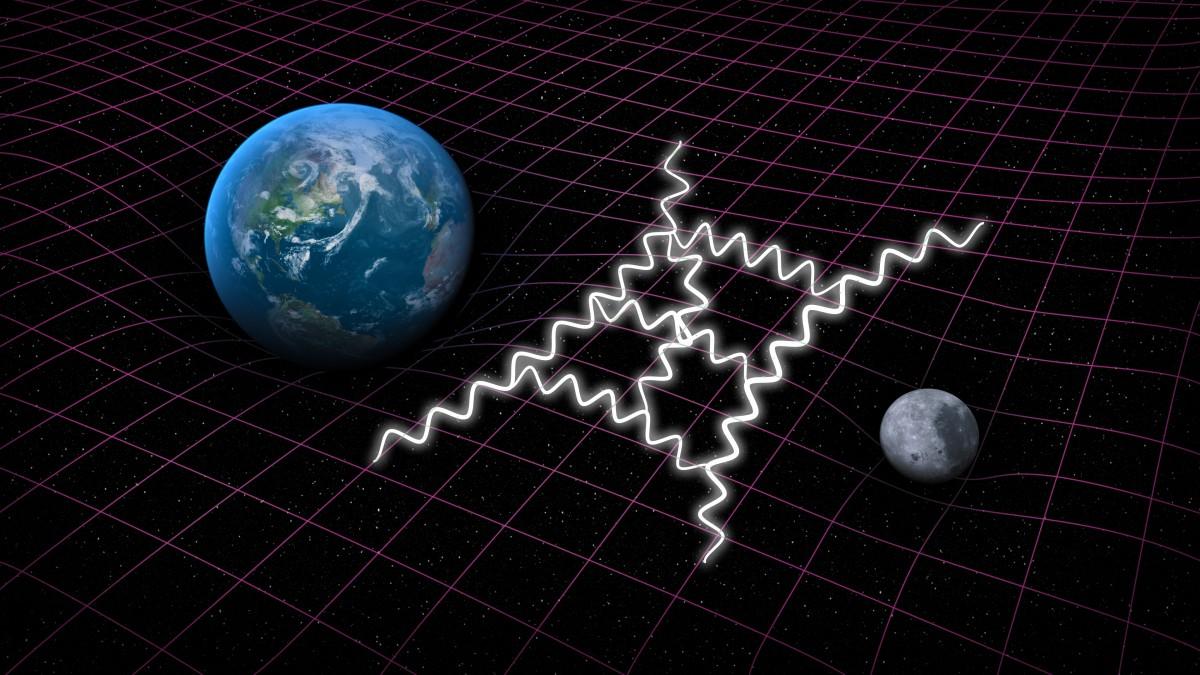
Gravity, controlled by Einstein's theories, and everything else (weak, strong, and electromagnetic interactions), controlled by quantum physics, are two independent rules that govern everything in the Universe.
But the difficulty with the accusation of quantum gravity is that nothing interesting happens on the horizon - GRT should work well there. This is because the force of quantum gravity should depend on the curvature of space-time, but the curvature on the event horizon is inversely related to the BH mass. This means that the larger the BH, the smaller the expected quantum gravitational effects that appear on the horizon.
Quantum gravitational effects should become noticeable only when the BH reaches the Planck mass, about 10 micrograms. When a BH shrinks to such a size, information can be released due to quantum gravity. But depending on what the BH was formed from, up to this point an arbitrarily large amount of information may be stored in the BH. And when only the Planck mass remains, it is very difficult to extract such a large amount of information with such a small residual amount of energy necessary for its encoding.
In the past 40 years, the greatest minds on the planet have tried to solve this puzzle. It may seem strange that such a ridiculous problem attracts so much attention, but physicists have good reasons for this. BH evaporation is the most well-studied case of interaction between quantum theory and gravity, and it may be the key to finding the correct theory of quantum gravity. The solution of the paradox would be a breakthrough, and, no doubt, would lead to a conceptually new understanding of nature.
So far, the majority of attempts to solve the information loss paradox fall into one of four large categories, each of which has its pros and cons.
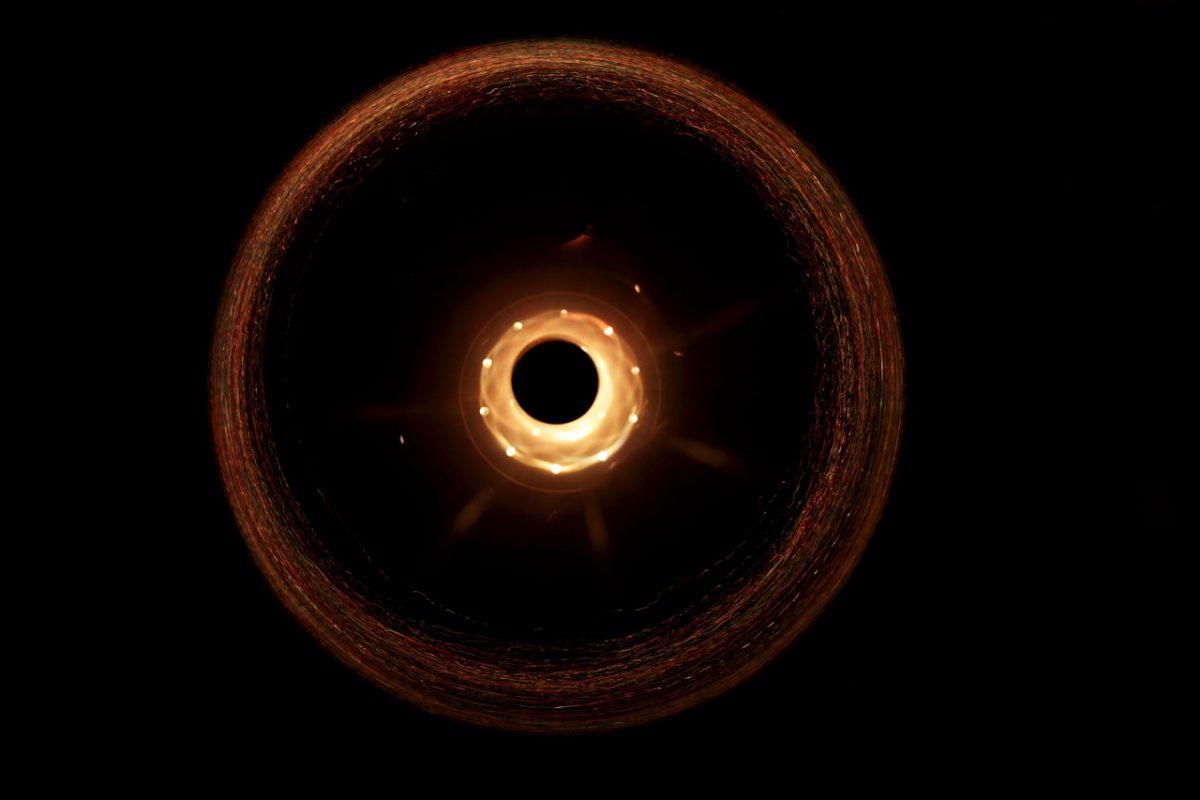
Information may leave the BH in the early stages, but such a mechanism has not yet been openly
1. Information is emitted in the early stages. It begins to leak long before the BH reaches the Planck mass. Today it is the most popular option. But it is not yet clear how to encode information in the radiation, and how to bypass the result of Hawking's calculations.
The advantage of this solution is compatibility with the well-known features of the thermodynamics of black holes. The disadvantage is that in order for it to work, the presence of some kind of non-locality is necessary - a frightening long-range action. Worse yet, a statement was recently made that if information is emitted in the early stages, then the BH is surrounded by a high-energy barrier - a fiery wall. If this wall exists, then the equivalence principle underlying GTR is violated. A very unattractive option.
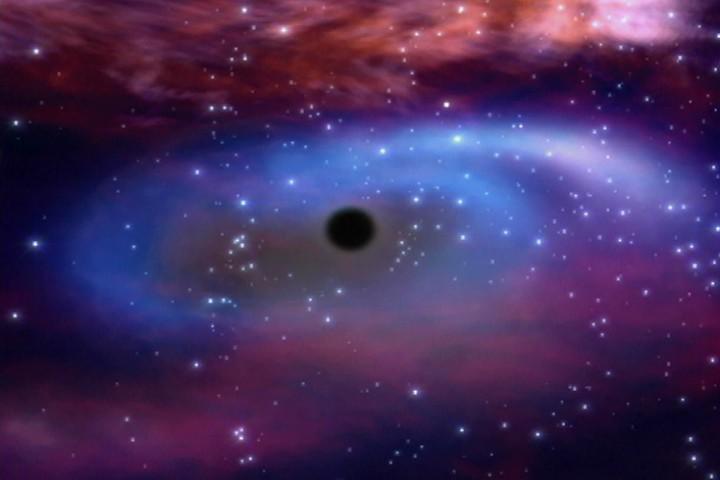
2. Information is stored internally, or released at a later stage. In this case, the information remains inside the BH until the quantum gravitational effects become sufficiently strong when the BH reaches the Planck mass. Then the information is either emitted by the remaining energy, or remains forever in the remnants.
The advantage of this option is that it does not require changes in GTR or quantum theory in those conditions in which they should, in our opinion, remain operable. It breaks exactly where we expect: when the curvature of space-time becomes too large. The disadvantage is that some claim that it leads to another paradox, to the possibility of the infinite generation of pairs of black holes in a weak background field, that is, around us. The theoretical support for this statement is not very strong, but it is still widely used.

Active galaxies absorb and accelerate and eject the matter falling in them, approaching their central supermassive black hole. Perhaps the information at the fundamental level is also lost.
3. Information is destroyed. Proponents of this approach accept the destruction of information after a fall in BH. For a long time it was believed that this option leads to violations of the law of conservation of energy, which leads to another contradiction. But in recent years, new arguments have emerged, according to which energy can be saved with the loss of information, so this option has come to life a bit. But according to my estimates this solution is the least popular.
But, similar to the first option, the statement of someone's opinion is not considered a solution to the problem. In order for this option to work, it is necessary to change the quantum theory. And such a change should not conflict with any experimental tests of quantum mechanics. It is hard to do.

Perhaps what we consider to be a black hole is, in fact, not black; perhaps the nuance is how to completely circumvent this paradox.
4. There are no black holes. Black holes are not formed, or information does not cross the horizon. This attempt to solve periodically occurs, but does not receive much development. The advantage is obviously how to bypass the output of Hawking's calculations. The disadvantage is that this will require large deviations from general relativity in situations with a small curvature, so it is very difficult to combine them with accurate measurements of gravity.
There are several other proposals that do not fall into these categories, but I will not - I will not succeed - try to survey them all here. In principle, there is no good overview article on this topic at all - perhaps because the very thought of compiling all the solutions is scary. A lot of texts. The loss of information in a black hole is undoubtedly the most discussed paradox of all.
So he should remain. The temperature of the BH observed by us today is too low to be directly observed. Therefore, in the foreseeable future, no one will be able to measure what happens to information crossing the horizon. So let me make a prediction. After 10 years, the problem is still unsolved.
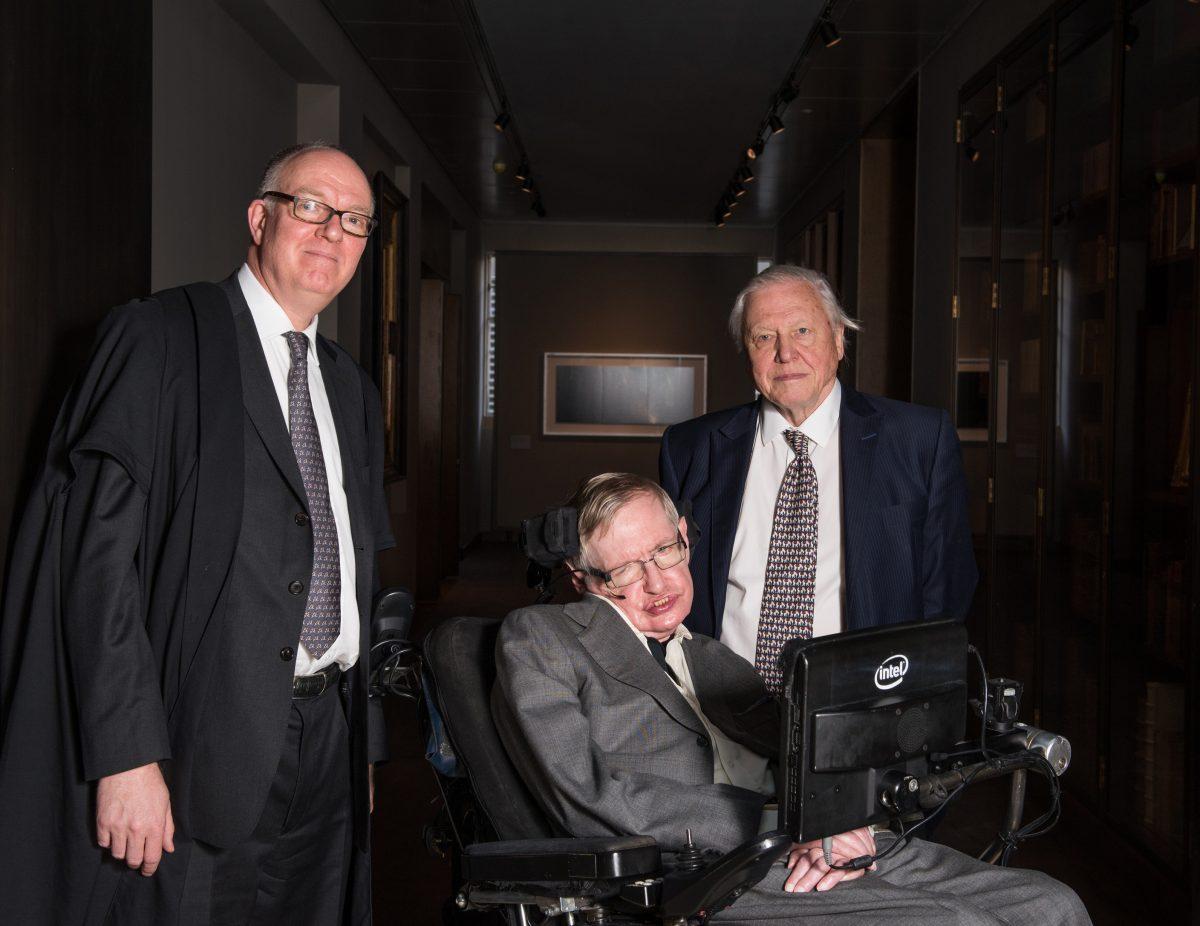
Stephen Hawking, aged 73 (2015) with Richard Ovendn and David Attenborough, at the opening of the Weston Library in Oxford.
Hawking recently celebrated his 75th birthday, which in itself is a remarkable achievement. 50 years ago, the doctors told him that he would soon die, but he stubbornly clings to life. The paradox of information loss in BH can be even more stubborn. If there is no revolutionary breakthrough, it can outlast us all.
Sabin Hossenfelder, a theoretical physicist specializing in quantum gravity and high-energy physics, writes articles on popular science topics.
Source: https://habr.com/ru/post/373965/
All Articles